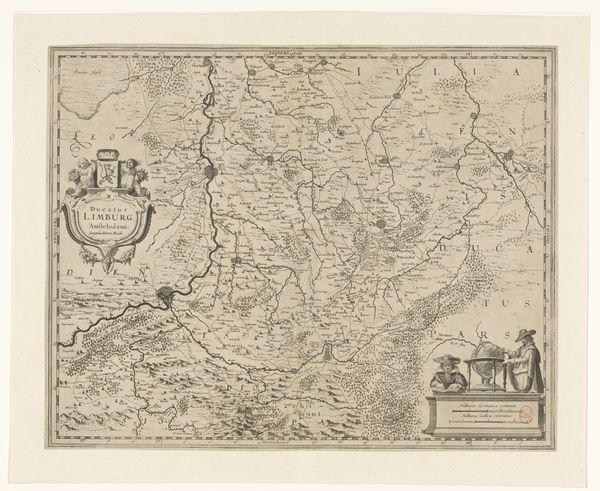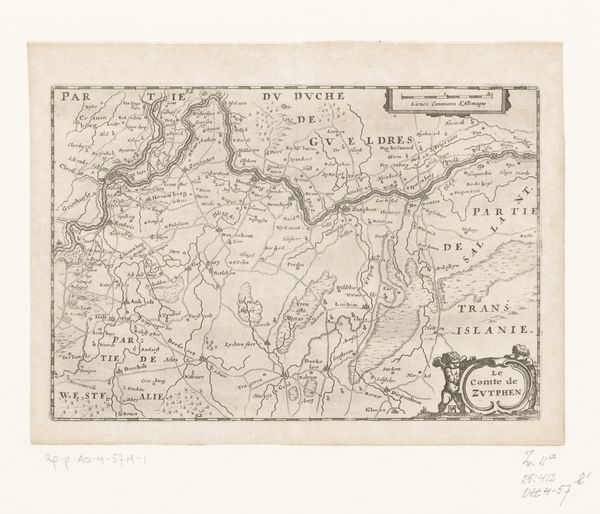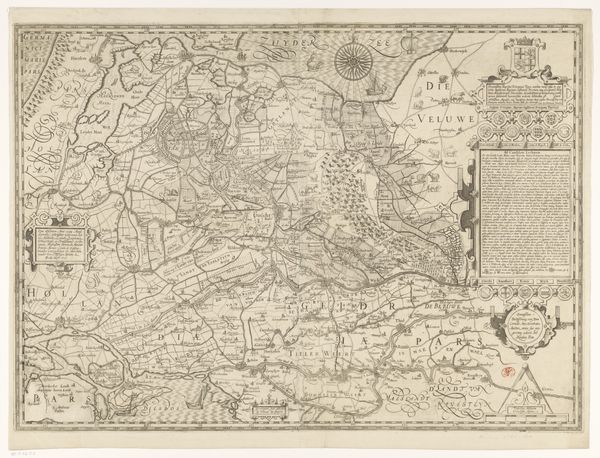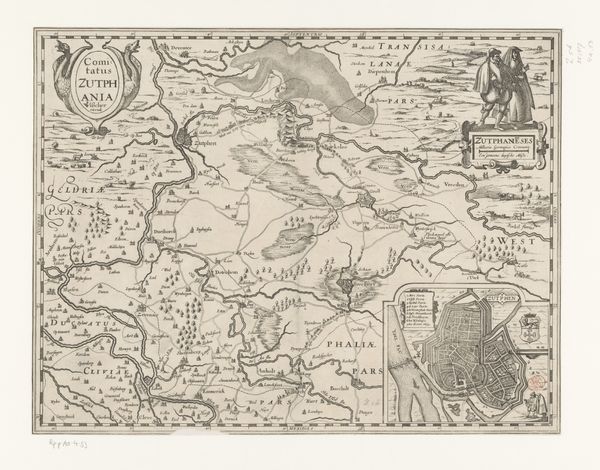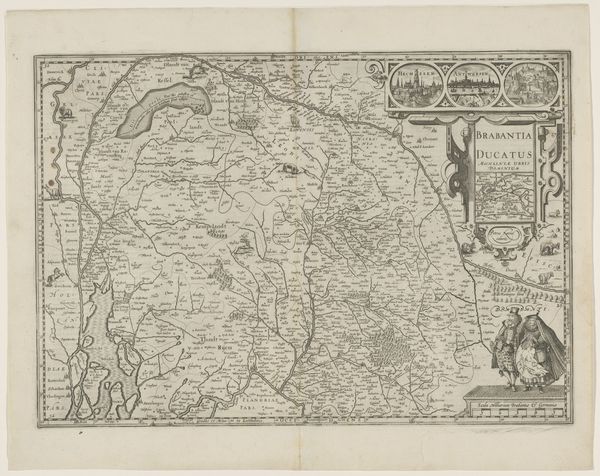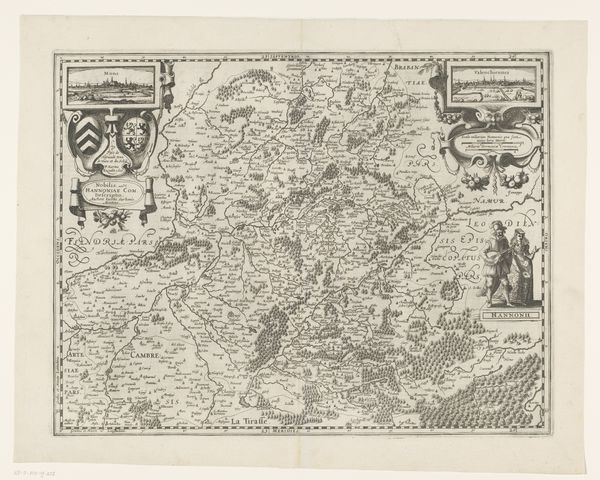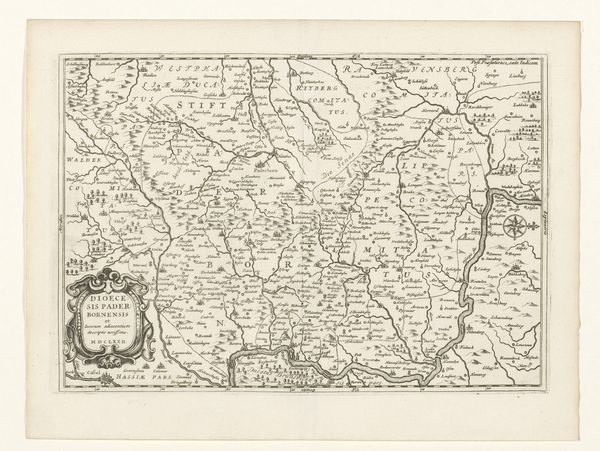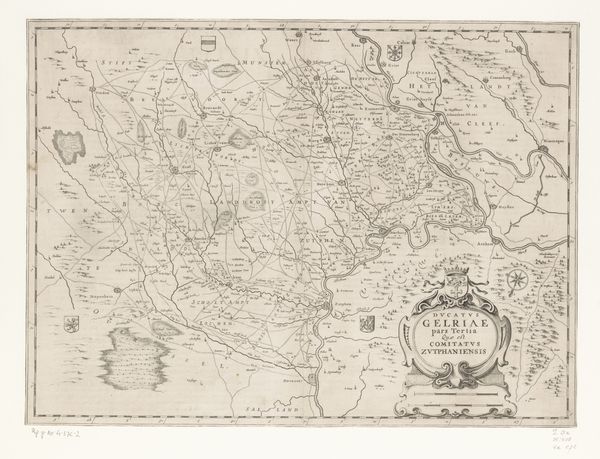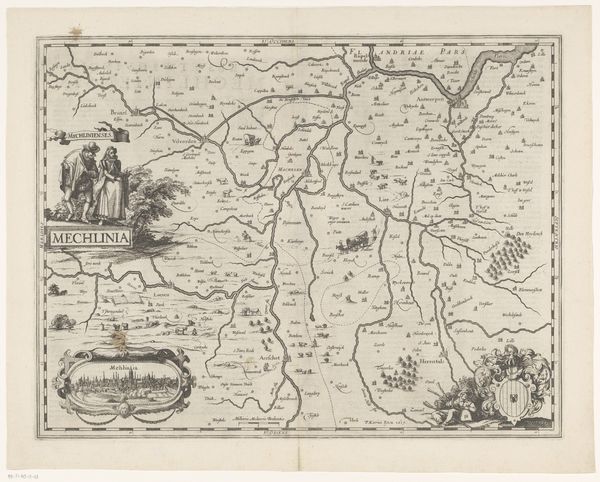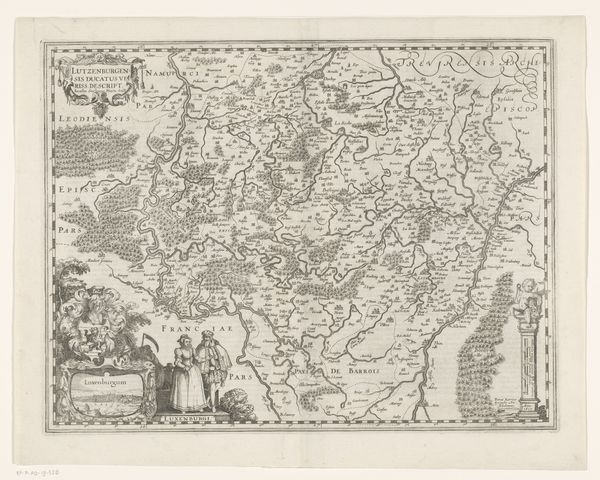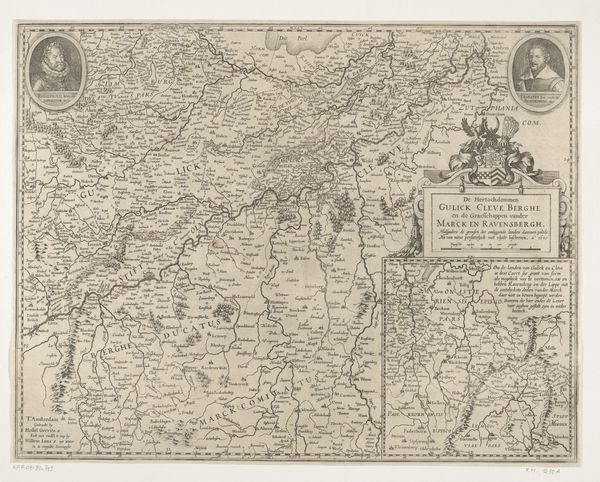
print, engraving
#
baroque
# print
#
pen illustration
#
pen sketch
#
old engraving style
#
history-painting
#
engraving
Dimensions: height 380 mm, width 494 mm
Copyright: Rijks Museum: Open Domain
Curator: This print, "Kaart van het hertogdom Limburg met een gezicht op de stad Limburg," produced anonymously between 1617 and 1622, offers a fascinating glimpse into early modern cartography. It's an engraving depicting the Duchy of Limburg. Editor: It strikes me as meticulously crafted, yet also incredibly rigid. The landscapes appear almost like abstract patterns. What story does it tell beyond just geographical representation? Curator: It's about power, certainly. Mapping was a crucial tool for governance and asserting control. This print would have served to visualize the Duke's territory, defining its borders, resources and points of strategic interest in the Diocese of Liege. Editor: You can feel the weight of religious and aristocratic authority through the highly ornate crest on the top left. I am interested in what appears at the bottom right - can you tell me more about it? Curator: This section emphasizes the area's legal structure and identity through prominent Latin nomenclature which aimed to position the Duchy of Limburg on the map of European states. Editor: Absolutely. What really grabs me are the little human figures peppering the landscape, especially along the rivers. Are they idealized portrayals or some vision of societal dynamics? Curator: They reflect a romanticized version of everyday life within the region but their prominence on the map reveals how crucial labour and trade were in making and breaking places. Note too how all human presence seemingly disappears when encountering forested areas; this map thus reveals human action with an element of imposed control onto nature. Editor: A clear indication of societal organization and use of land for the aristocratic eye! Considering that this was during the Baroque period, it must also have offered some measure of local pride for those who identified with this land. Curator: It definitely projects a sense of order and prosperity but let's not forget these images often glossed over complex realities, such as poverty and local resistance, which might challenge established authority. Editor: I suppose looking at it critically allows one to question its intentions in its own time but as much as anything, I really do enjoy discovering old cartographies which give access to past experiences. Curator: Indeed, this anonymous engraving reveals that a lot can be deciphered about cultural pride but as well its underlaying aims by simply looking.
Comments
No comments
Be the first to comment and join the conversation on the ultimate creative platform.


